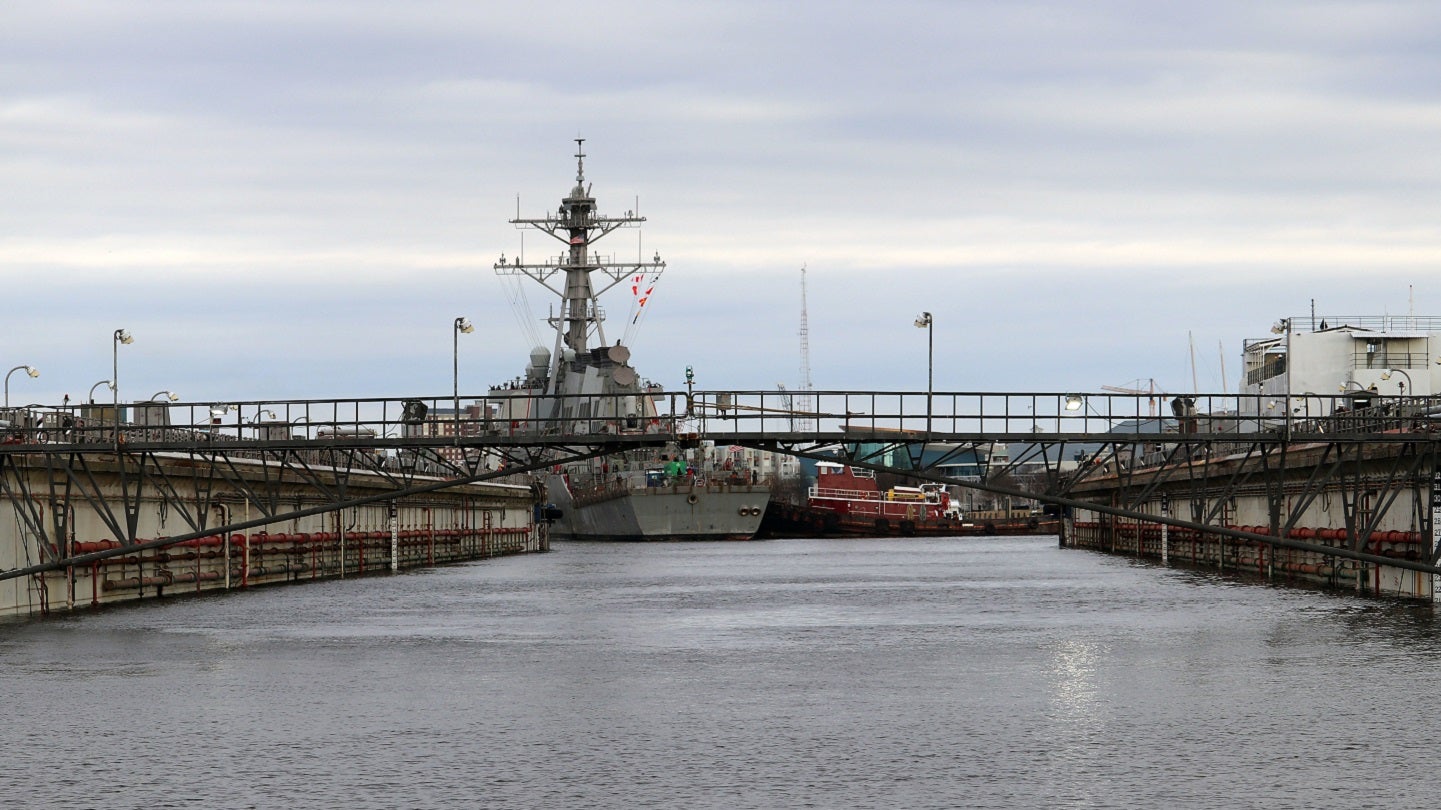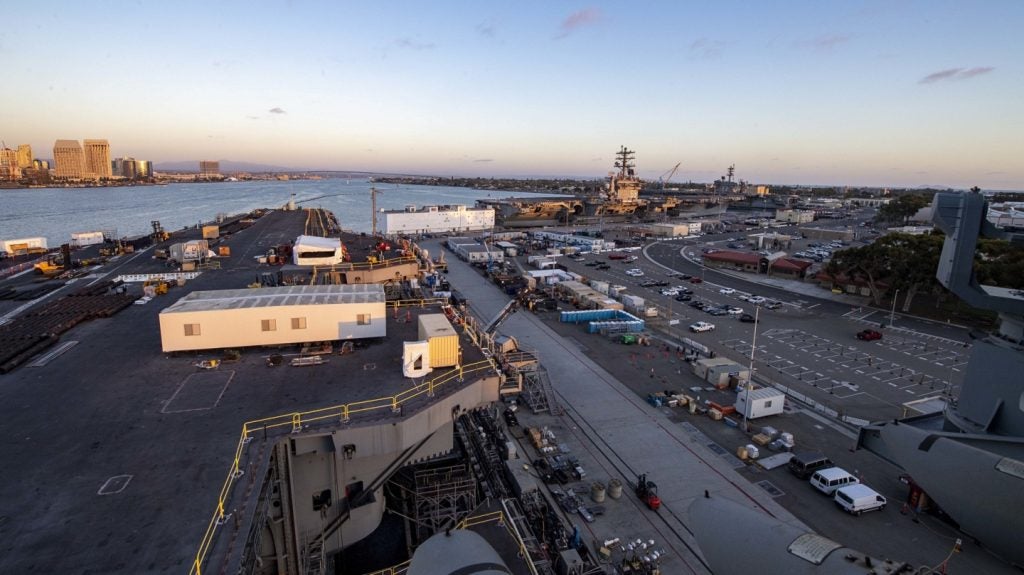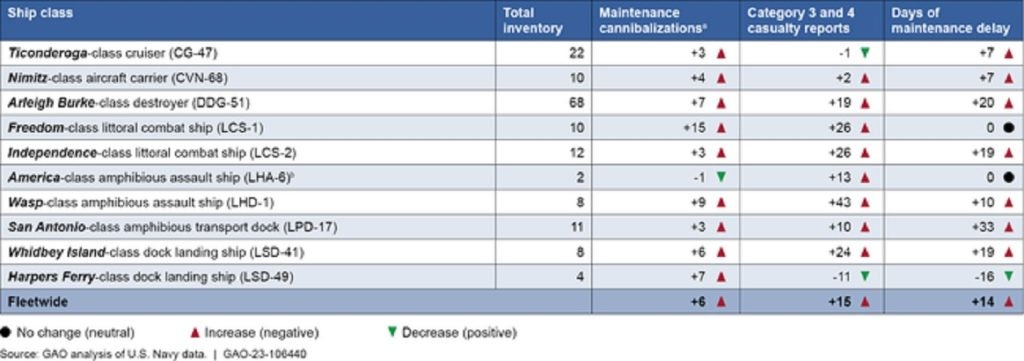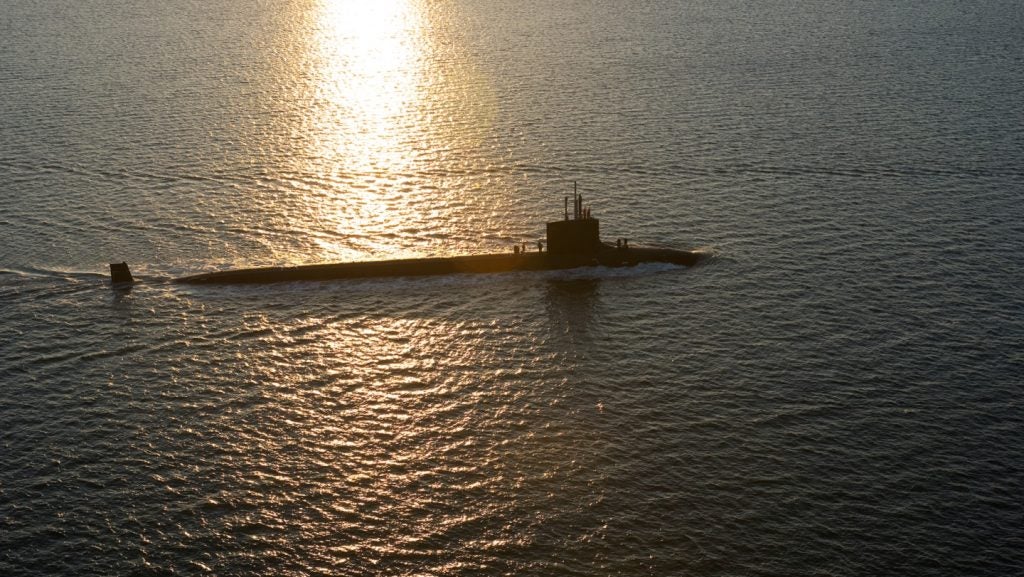
A pair of reports conducted by the US Government Accountability Office (GAO) have laid bare the challenges that the US Navy (USN) faces in its surface ship sustainability, as well as in the recapitalisation of the undersea arm of the country’s nuclear defence triad.
Published in late January this year, the reports into the USN found that from FY2011-2021, the ship classes reviewed faced “persistent and worsening challenges” including a decrease in the number of hours a ship is available for operations or training.
These challenges included an increase in the number of working ship parts removed and used elsewhere due to parts shortages; an increase in casualty reports—i.e., reports of events that impair a ship’s ability to do its job; and an increase in maintenance delays.
The GAO stated that it had made “dozens of recommendations” to address the issues, but the USN had “yet to fully implement them all”.
In its review of sustainment metrics for ten ship classes, it was found that maintenance cannibalisations – the process of working parts being removed from one vessel to another due to parts shortages – had increased, while maintenance day delays saw vessels staying in shipyards beyond the initially planned sustainment programme end date.

Further, ‘steaming hours’, which is a metric to determine the amount of time a ship is on operations or undergoing training, had also decreased. In addition, the US GAO said that the USN was “not fully or accurately tracking other metrics – operational availability and material availability – that the Department of Defense and [the USN] have determined are key to assessing ship effectiveness”.
How well do you really know your competitors?
Access the most comprehensive Company Profiles on the market, powered by GlobalData. Save hours of research. Gain competitive edge.

Thank you!
Your download email will arrive shortly
Not ready to buy yet? Download a free sample
We are confident about the unique quality of our Company Profiles. However, we want you to make the most beneficial decision for your business, so we offer a free sample that you can download by submitting the below form
By GlobalDataTotal costs for operating and support increased by around $2.5bn from FY2011-2020, the GAO found, including $1.2bn in sustainment costs. Despite the USN adding 33 ships to the ten types assessed over the period, collectively the number of steaming hours for the classes had declined. Steaming hour costs had also increased during the reporting period.
Just three of the ten classes of ship (the Nimitz-class aircraft carriers, America-class amphibious assault ships, and Harpers Ferry-class dock landing ships) saw a decrease in the cost per steaming hour. Conversely, seven classes – the Ticonderoga-class guided missile cruisers, Arleigh Burke-class destroyers, both the Freedom– and Independence-class Littoral Combat Ships, Wasp-class amphibious assault ships, San Antonio-class amphibious transport docks, and Whidbey Island-class dock landing ship – saw an increase in this key metric.
Previous reporting by the GAO found that the challenges of increased sustainment costs for USN vessels had resulted in some vessels having maintenance deferred. In doing so, a vessel’s material state will worsen, resulting in even higher operational and subsequent sustainment costs. Although the USN had “generally concurred” with the “dozens of recommendations” made by the GAO to solve these issues, the service had “not fully implemented” many of the recommendations made.

Recommendations include the need to better manage deferred depot maintenance backlogs, better data tracking during intermediate maintenance periods, and ensuring that new ships are reliable and able to be sustained as planned.
“The Department of Defense spends tens of billions of dollars annually to sustain its weapon systems in an effort to ensure that these systems are available to simultaneously support today’s military operations and maintain the capability to meet future defense requirements,” the GAO stated in its conclusions.
“Costs to operate and sustain the 151 US Navy ships included in this review totaled approximately $17bn in fiscal year 2020. GAO’s past work has shown that the US Navy has faced significant readiness challenges over the last decade.”
The report itself was a public version of a December 2022 analysis presented to the US Navy, with “sensitive” details subsequently redacted prior to wider release.
Columbia build impacting Virginia efforts
Meanwhile, the GAO also reported that the US Navy “lacks insight” into the $132bn programme to develop and purchase 12 Columbia-class nuclear-powered ballistic missile submarines (SSBN), the first of which is intended to be delivered in April 2027. The GAO said that the USN had not conducted a schedule risk analysis, used to identify and manage risks to achieving delivery dates.
“Without a statistical schedule risk analysis, programmes have limited insight into how schedule risks could affect the likelihood of achieving key program milestones, including delivery, and the amount of margin—or a reserve of extra time—needed to manage critical risks and avoid delays,” the GAO stated.

The GAO report found that after more than a year of construction on the lead Columbia submarine, shipbuilders were facing delays due to design, materials, and quality challenges. The strategic importance of the sub-surface element of the US Government’s nuclear deterrent is such that shipbuilders said that staff originally working on the Virginia-class nuclear-powered attack submarine (SSN) programme were being redirected to the Columbia build, contributing to delays to the SNN builds.
“Without updated long-term planning, the US Navy cannot be certain that the fiscal year 2024 budget request will be sufficient to meet the production schedule it has planned for these submarine classes,” the GAO reported.
It was reported by Naval Technology in August last year that the USN was looking to reduce the build time of its Columbia-class SSBNs from the current 84 months down to 78 months, in a bid to reduce the potential for gaps as the incumbent Ohio class gradually leaves service.
The USN commissioned its 21st Virginia-class Block IV SSN, USS Montana (SSN 794), in June last year.







